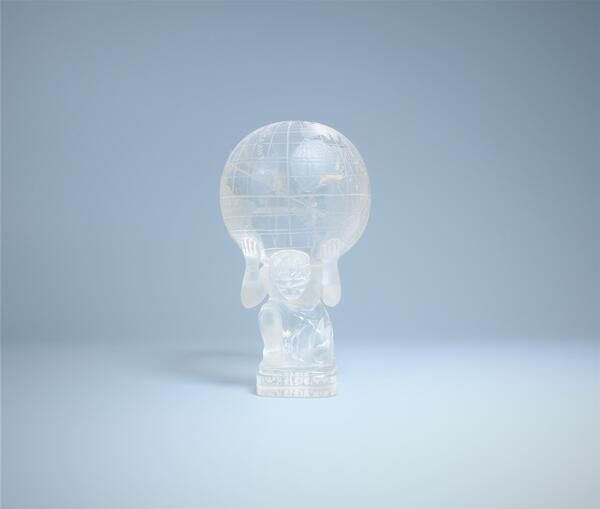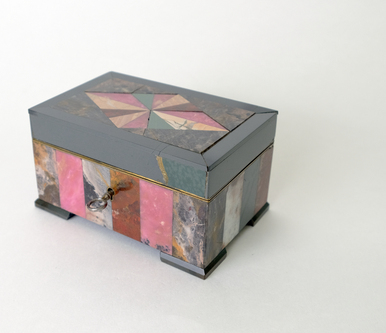In the 19th century, stone stamps were made mainly by craftsmen in Yekaterinburg and surrounding areas. Their items through buyers were sold in jewelry stores in Moscow, St. Petersburg, and other Russian cities. There, the future owner could choose the one they preferred and immediately order an engraving of a coat of arms, a monogram, or any other image on it.
Blank seal matrices were also sold at fairs, for example, Irbit and Nizhny Novgorod fairs. Carvers and engravers worked there and could create the desired pattern on them. This process took about an hour and cost, depending on the complexity, from 50 kopecks to 1 ruble.
The Museum of Stone-Cutting and Jewelry Art History of the Urals houses seal matrices with images of varying complexity: noble coats of arms, simple crowns, Gothic monograms. Hearts were sometimes carved on stamps for personal letters; whereas on merchant seals — symbols of trade, for example, scales or the Caduceus of Hermes.
The museum collection displays a rock crystal seal matrix with an image of a mythical character depicted on it — Atlas. He holds a globe on his shoulders. An unknown master did not follow the ancient canons of this image: his Atlas does not look like a muscular giant, but an ordinary person who carries a heavy burden. One could notice the original cubic shape of the matrix in the outlines of the figure. Atlas’s head is round and disproportionately large in comparison to his body. The arms and legs are massive; however, his muscles are not accentuated. The master drew parallels, meridians, outlines, and names of continents on the globe.
Rock crystal was one of the most popular materials for making stamps. They were also carved from citrine, agate, amethyst, jasper, rhodonite, and other Ural gems. Rich merchants often collected such items, so the inscriptions on them might not have a practical purpose: instead of the owner’s initials, masters carved on the matrices humorous phrases, proverbs, and sayings. A collection of stone stamps was considered a sign of wealth and good taste of the owner.
Blank seal matrices were also sold at fairs, for example, Irbit and Nizhny Novgorod fairs. Carvers and engravers worked there and could create the desired pattern on them. This process took about an hour and cost, depending on the complexity, from 50 kopecks to 1 ruble.
The Museum of Stone-Cutting and Jewelry Art History of the Urals houses seal matrices with images of varying complexity: noble coats of arms, simple crowns, Gothic monograms. Hearts were sometimes carved on stamps for personal letters; whereas on merchant seals — symbols of trade, for example, scales or the Caduceus of Hermes.
The museum collection displays a rock crystal seal matrix with an image of a mythical character depicted on it — Atlas. He holds a globe on his shoulders. An unknown master did not follow the ancient canons of this image: his Atlas does not look like a muscular giant, but an ordinary person who carries a heavy burden. One could notice the original cubic shape of the matrix in the outlines of the figure. Atlas’s head is round and disproportionately large in comparison to his body. The arms and legs are massive; however, his muscles are not accentuated. The master drew parallels, meridians, outlines, and names of continents on the globe.
Rock crystal was one of the most popular materials for making stamps. They were also carved from citrine, agate, amethyst, jasper, rhodonite, and other Ural gems. Rich merchants often collected such items, so the inscriptions on them might not have a practical purpose: instead of the owner’s initials, masters carved on the matrices humorous phrases, proverbs, and sayings. A collection of stone stamps was considered a sign of wealth and good taste of the owner.



